Chinese desserts are a delicious and integral part of Chinese cuisine. They offer a variety of flavors and textures, from sweet and sticky to light and refreshing, providing a satisfying end to any meal.
If you’ve ever been curious about what makes Chinese desserts so unique and beloved, this article will take you through 22 traditional favorites. Whether you are seeking something new to try or simply want to broaden your culinary horizons, these desserts offer a taste of China’s rich culture and history.
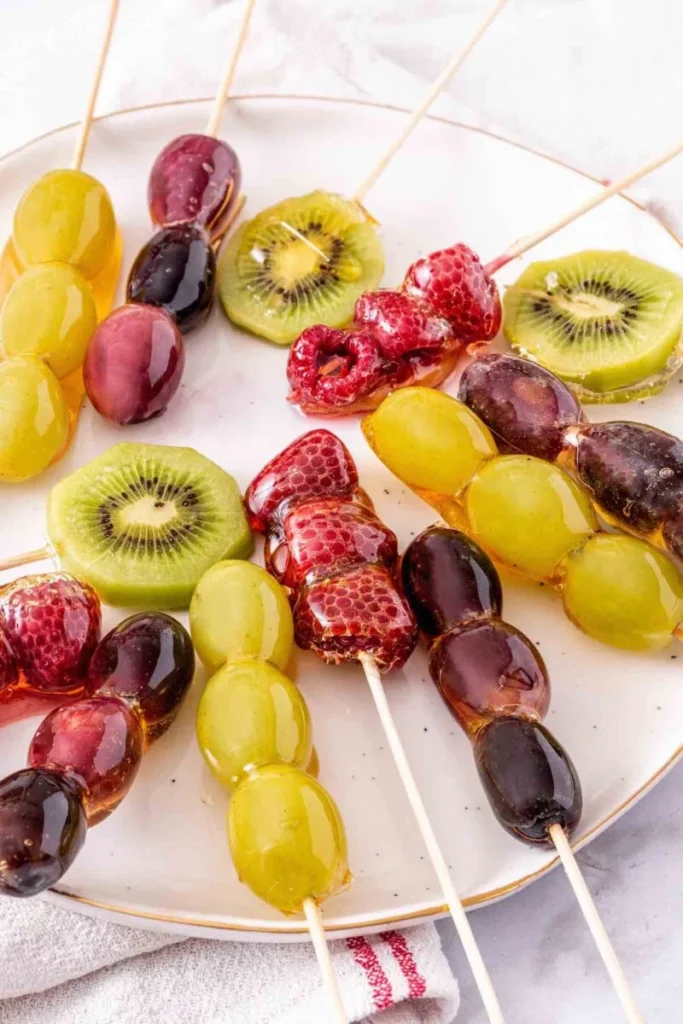
1) Tanghulu
Tanghulu is a traditional Chinese dessert that consists of fruit skewers coated in a hard candy shell. The classic choice of fruit for tanghulu is hawthorn berries, but you can use various fruits like strawberries, grapes, kiwis, cherries, and pineapple.
To make tanghulu, start by washing and drying your chosen fruits. Skewer the fruits on bamboo sticks and set them aside. Prepare a baking sheet lined with parchment paper or a silicone mat.
Next, make the candy coating. Combine sugar, water, and corn syrup in a saucepan. Heat the mixture over medium heat until it dissolves. Increase the heat and bring it to a boil until it reaches the hard crack stage, around 300°F (150°C).
Once the syrup is ready, reduce the heat slightly. Dip each fruit skewer into the hot syrup, turning it to ensure an even coating. Let any excess syrup drip off before placing the skewered fruit on the prepared baking sheet.
Allow the candy-coated fruit to cool and harden. Tanghulu is best enjoyed fresh, as the candy shell provides a satisfying crunch that pairs well with the juicy fruit inside. Festivals in northern China often celebrate this delightful treat.
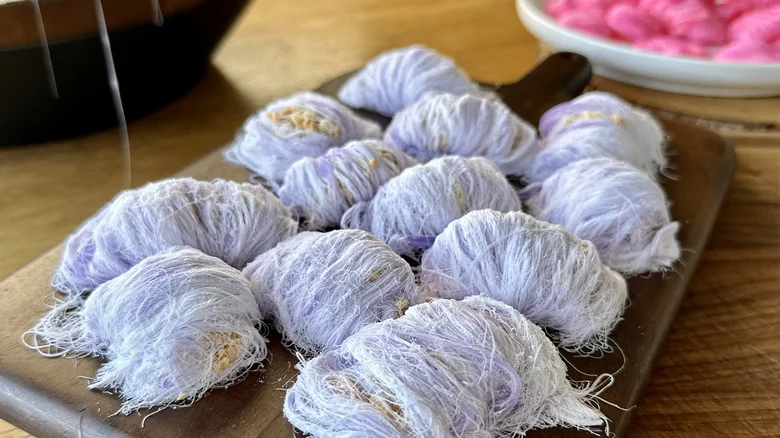
2) Dragon’s Beard Candy
Dragon’s Beard Candy is a traditional Chinese treat. It is famous for its fine, thread-like strands that look like a dragon’s beard. This candy has a unique texture that melts in your mouth.
To make Dragon’s Beard Candy, you need sugar, water, corn syrup, and white vinegar. Start by boiling these ingredients until the mixture reaches the Hard Ball Stage (250°F to 265°F).
Once the mixture cools slightly, stretch it into thin strands. Then, fold and stretch the strands repeatedly until they become very fine. This process requires patience and skill.
The candy is often filled with nuts or sesame seeds. It offers a sweet and nutty flavor that many people find delightful. Dragon’s Beard Candy is not only tasty but also a fascinating treat to watch being made.
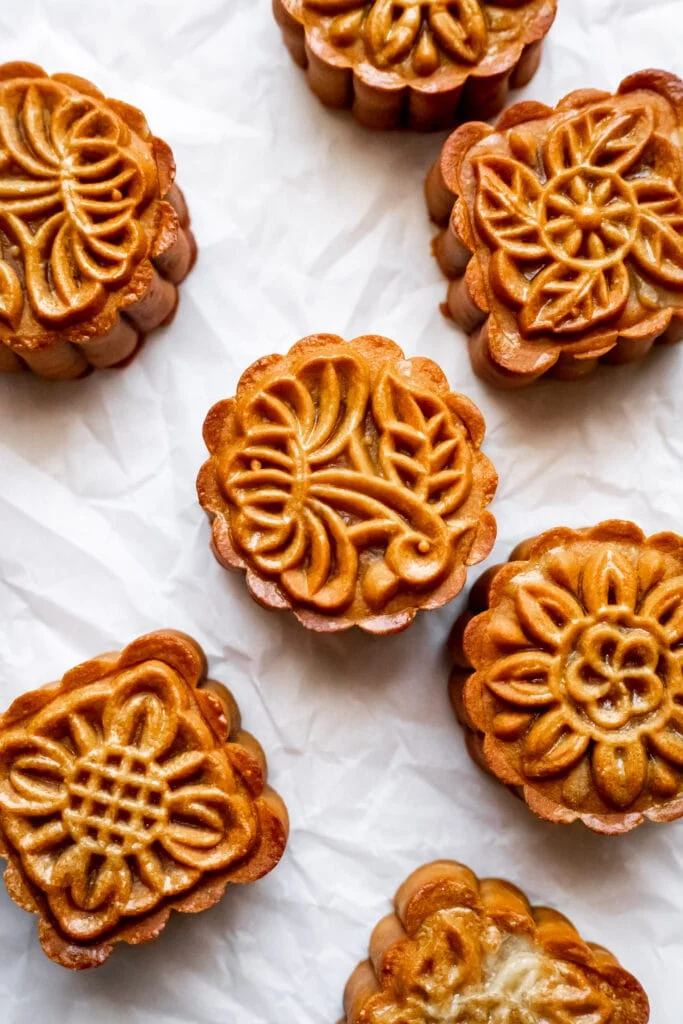
3) Mooncake
Mooncakes are a traditional Chinese dessert often enjoyed during the Mid-Autumn Festival. These round pastries have a rich history and are commonly gifted to friends and family.
The outer crust of a mooncake is typically made from a dough that becomes golden and firm after baking. The filling can vary but often includes sweet red bean paste, lotus seed paste, or mixed nuts.
To make a mooncake, you need to prepare the dough and filling separately. Once the dough is ready, you wrap it around the filling to form a smooth ball. The dough ball is then placed into a mooncake mold to shape and imprint a pattern.
Bake the mooncakes at 175°C (350°F) for five minutes to set the surface. Afterward, brush them with a thin layer of egg wash and continue baking for another 15 to 20 minutes until they turn golden brown. Allow them to cool completely before serving.
Using a wooden or plastic mooncake mold ensures each piece has a traditional look. The intricate designs on the mold include symbols of good luck and happiness. Mooncakes are not only tasty but also carry cultural significance, making them a special treat during the festival.
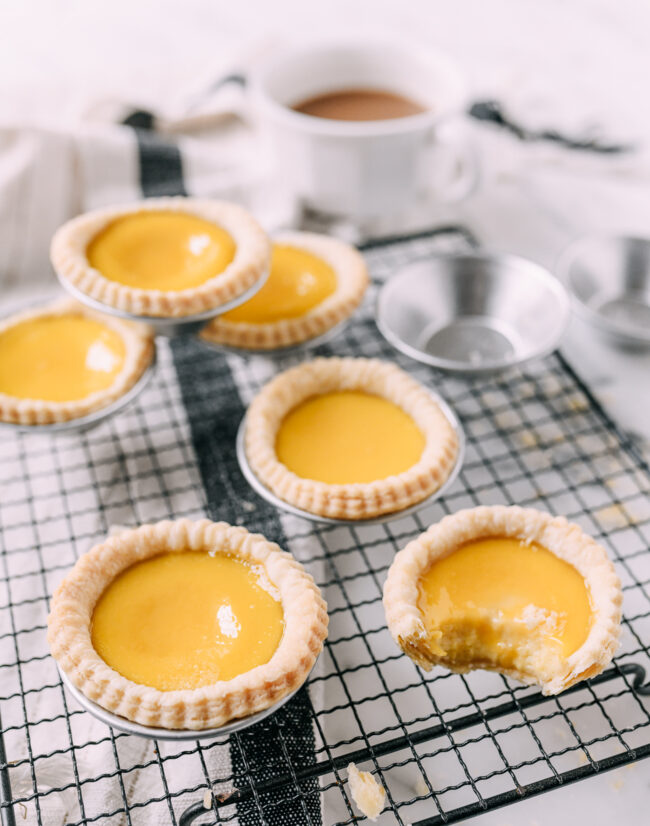
4) Egg Tart
Egg tarts are a classic Chinese dessert that combines a flaky pastry crust with smooth, sweet egg custard. Originating from Hong Kong, they are popular in dim sum restaurants.
To make egg tarts, you first prepare a dough. Roll it out to about 0.2 inches thick. Then, use a cookie cutter to cut the dough into circles and fit them into tart tins.
For the filling, whisk together eggs, egg yolks, evaporated milk, vanilla, and a sugar solution. Fill the tart shells about 70% full to prevent spillage. The custard will expand as it bakes.
Bake the tarts in a preheated oven at around 320°F (160°C) for about 35 minutes. The custard should be just set, and a toothpick inserted in the center should stand straight.
Allow the tarts to cool. A shiny layer will form on the custard when they reach room temperature, adding to their appealing look. These egg tarts are best enjoyed fresh, capturing the delicate balance of flavors and textures.
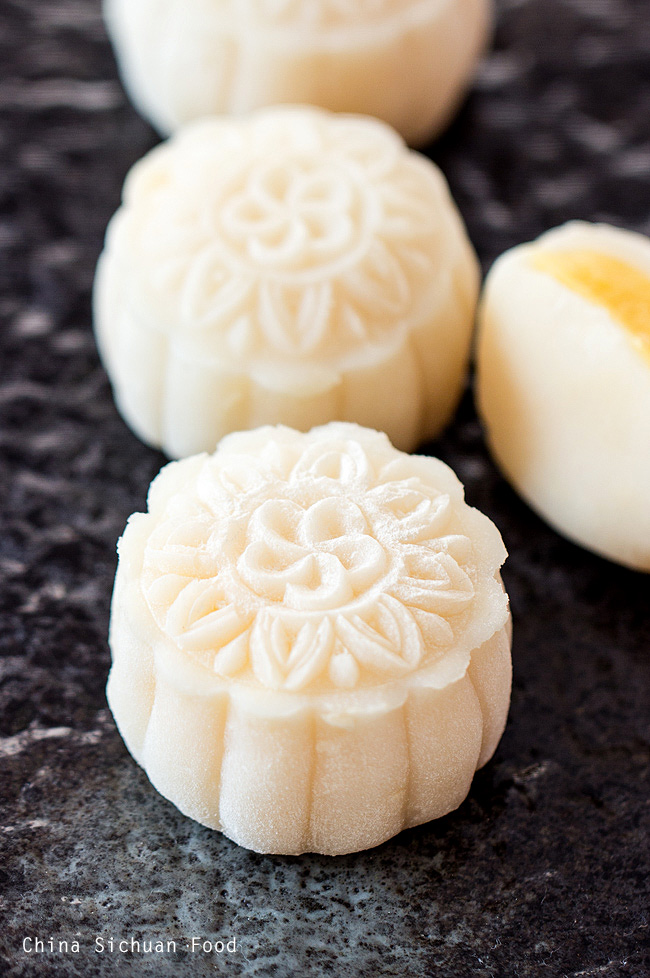
5) Snow Skin Mooncake
Snow Skin Mooncakes, also known as “bing pi yue bing,” are a popular Chinese dessert, especially during the Mid-Autumn Festival. Unlike traditional mooncakes with baked pastry, these have a soft, chewy texture like mochi.
You can make the snow skin by mixing glutinous rice flour, rice flour, and wheat starch. Add milk, powdered sugar, and oil. Stir until the mixture is smooth and lump-free.
The dough mixture needs to be steamed. Pour it into a heat-proof bowl and place it in a steamer. Steam the dough over medium-high heat for about 25 to 30 minutes until fully cooked.
For the filling, you can use different sweet pastes like red bean, lotus seed, or even custard. Once the dough is ready, divide it into small portions, flatten them, and wrap them around the filling.
Finally, shape the mooncakes using a mold. Place the dough ball in the mold, press firmly, then release it to reveal the detailed pattern. Snow Skin Mooncakes should be eaten fresh to retain their chewy texture.
Keep them at room temperature, as refrigeration can make the skin tough and dry. Snow Skin Mooncakes are best enjoyed immediately to capture their delicate and soft texture.
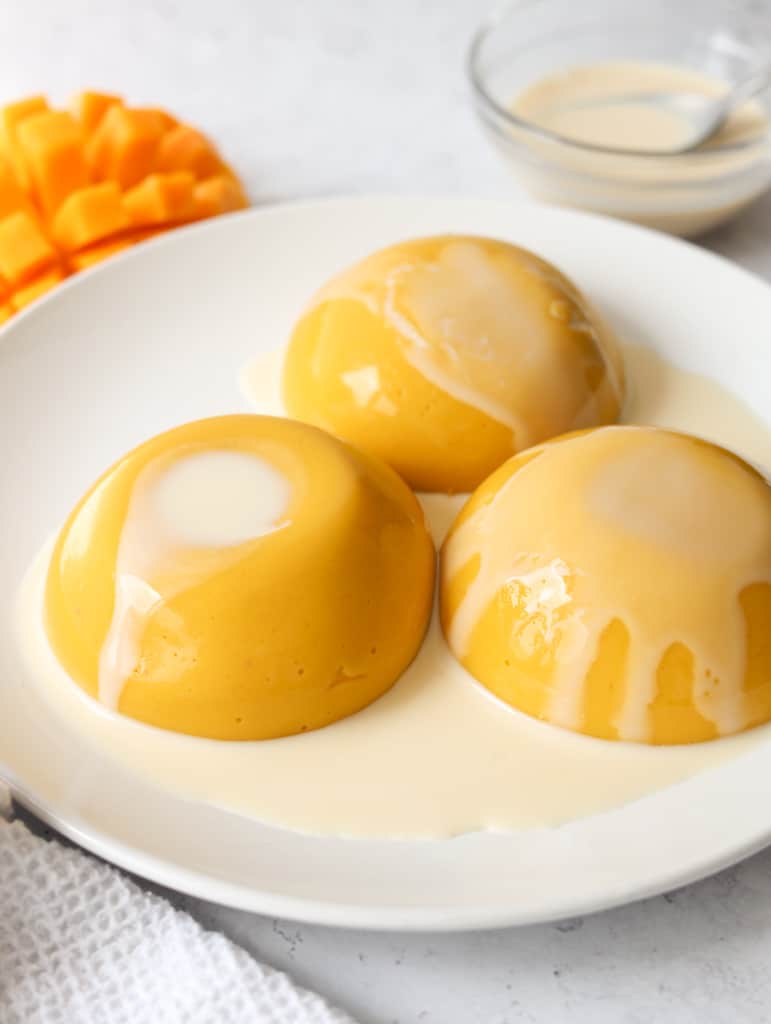
6) Mango Pudding
Mango pudding is a popular Chinese dessert enjoyed for its smooth texture and sweet mango flavor. It’s simple to make and a favorite at many gatherings.
Start by blending ripe mangoes until smooth. This forms the base of your pudding. Use fresh and ripe mangoes for the best flavor.
In a bowl, mix gelatin with cold water and set it aside to bloom. This step is important for a smooth texture.
Next, heat a mixture of sugar and water until the sugar dissolves. Add the bloomed gelatin to this, stirring until fully dissolved. Let this mix cool slightly.
Combine the mango puree with condensed milk or evaporated milk, depending on your preference. Slowly add the gelatin mixture to the mango mixture, stirring gently to avoid air bubbles.
Pour the mixture into serving molds and refrigerate until set, usually a few hours. Once set, you can top with fresh mango chunks for added texture and flavor.
Mango pudding is best served cold and makes a refreshing end to any meal. Enjoy its creamy texture and vibrant mango taste.
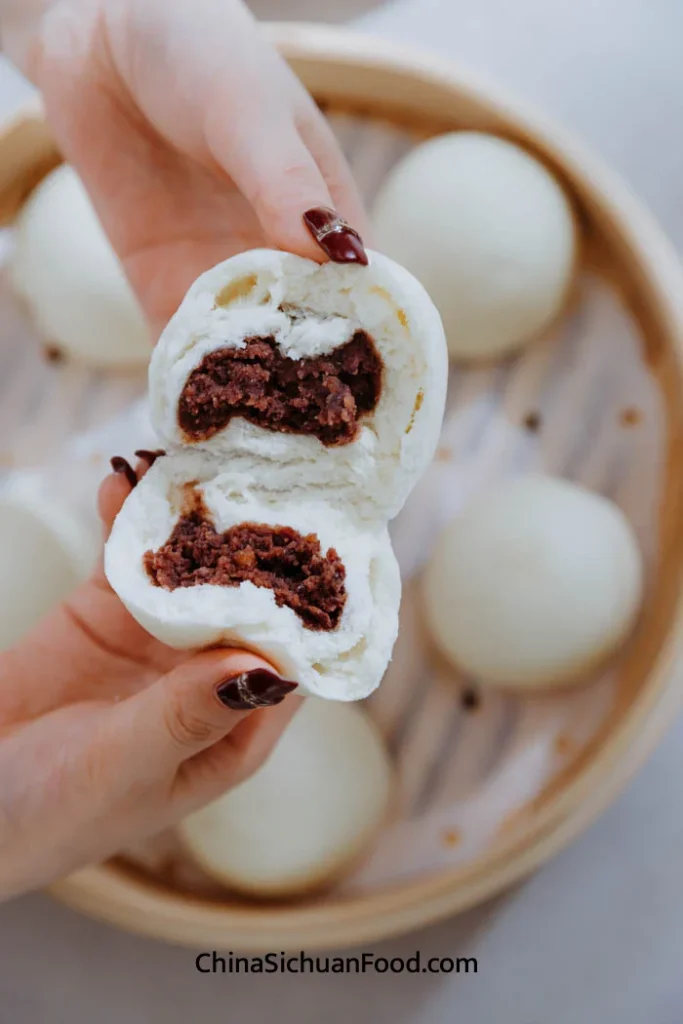
7) Red Bean Bun
Red Bean Buns, also known as Dou Sha Bao, are a classic Chinese dessert. These buns have a soft, fluffy exterior with a sweet red bean paste filling. They are typically steamed, which gives them a tender texture.
To make Red Bean Buns, you start by preparing the dough. Mix flour, sugar, yeast, salt, and water or milk. Knead the mixture until it forms a smooth dough. Let it rise in a warm place until it doubles in size.
While the dough is rising, you can prepare the red bean paste. This is usually made by cooking red beans with sugar until they are soft. Then, mash the beans to create a paste.
Once the dough has risen, divide it into small portions. Flatten each portion into a circle and place a spoonful of the red bean paste in the center. Seal the edges and shape the dough into a bun.
Place the buns in a steamer with the sealed side down. Steam them for about 15 minutes until they are puffy and cooked through. Leave them in the steamer for a few more minutes off the heat after cooking to set.
Red Bean Buns are not only delicious but also a wonderful representation of Chinese dessert culture. Enjoy them warm for the best taste.
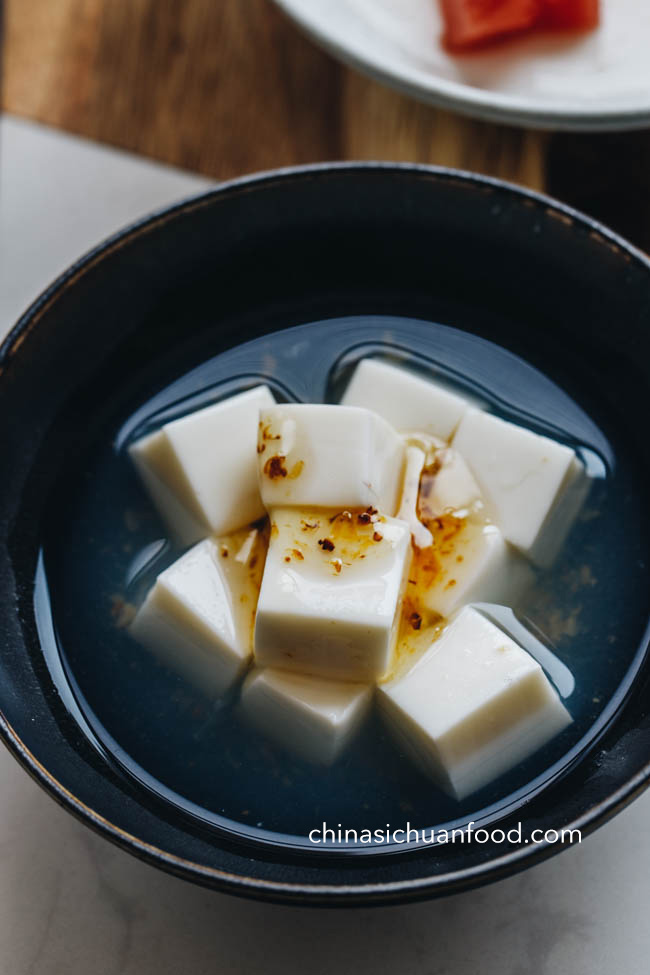
8) Almond Tofu
Almond tofu, also known as almond jelly, is a light and refreshing dessert. Though it’s called tofu, it doesn’t contain soybeans. Instead, it gets its name from its similar texture.
To make almond tofu, you typically use ingredients like agar-agar, almond milk, sugar, and almond extract. Agar-agar helps to set the mixture, giving it a smooth, jelly-like consistency.
Begin by dissolving agar-agar in hot water. Then, mix in sugar and almond milk. Adding almond extract gives it the distinctive almond flavor. Pour the mixture into molds and let it set in the fridge.
You can serve almond tofu chilled. It’s often enjoyed with a drizzle of sweet syrup or fruit toppings. This dessert is low in calories, making it a popular choice for a light treat.
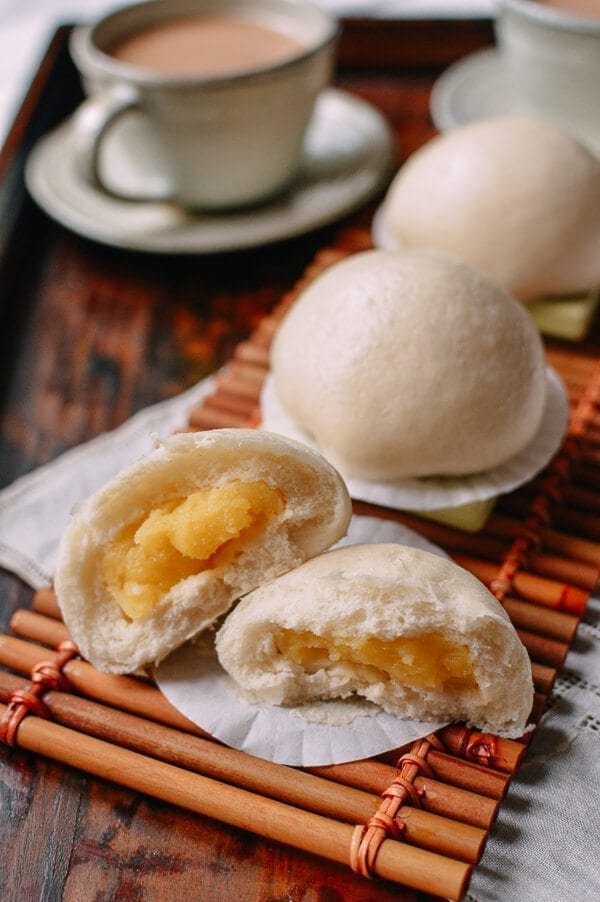
9) Steamed Custard Bun
Steamed Custard Buns, or Nai Wong Bao, are a popular dessert in Chinese cuisine. These soft buns have a sweet and creamy custard filling that melts in your mouth.
To make the buns, you start by preparing the dough. Knead the dough until smooth, then let it rest until it doubles in size. This ensures the buns will be light and fluffy.
While the dough rests, you can prepare the custard filling. Mixing eggs, powdered sugar, milk, and heavy cream creates a rich base. Add flour, cornstarch, and dried milk powder to thicken it, so it holds its shape inside the bun.
Once the dough is ready, roll it out into small circles. Place a spoonful of custard in the center of each circle, then wrap the dough around it, sealing it tightly.
Place the buns in a steamer lined with parchment paper. Let them rest for another 40 minutes before steaming. Steam the buns over boiling water for about 12 minutes until they’re cooked through.
Your Steamed Custard Buns are now ready to enjoy. The combination of the soft, pillowy dough and the sweet, creamy filling is sure to delight your taste buds.
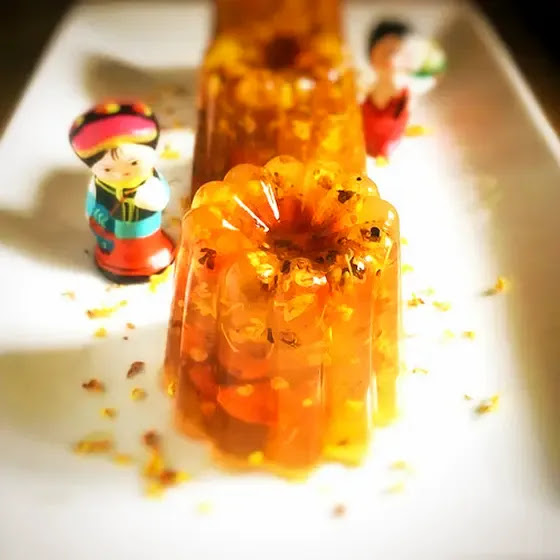
10) Sweet Osmanthus Jelly
Sweet Osmanthus Jelly is a refreshing Chinese dessert made from dried osmanthus flowers. This jelly is known for its unique, sweet aroma and light, floral taste.
For preparation, you start by making osmanthus tea. Boil water and steep the dried flowers in it for about 25 minutes. This step helps to extract the delicate flavors.
Next, mix agar-agar or konnyaku powder with sugar and cold water. These ingredients help form the jelly’s texture. Combine this mixture with the osmanthus tea and bring it to a boil while stirring continuously.
Optional ingredients like goji berries or wolfberries can be added for extra flavor and color. Pour the mixture into molds and let it set in the refrigerator until firm.
Sweet Osmanthus Jelly not only tastes good but is also visually appealing. The translucent jelly with floating flower petals makes for a beautiful presentation.
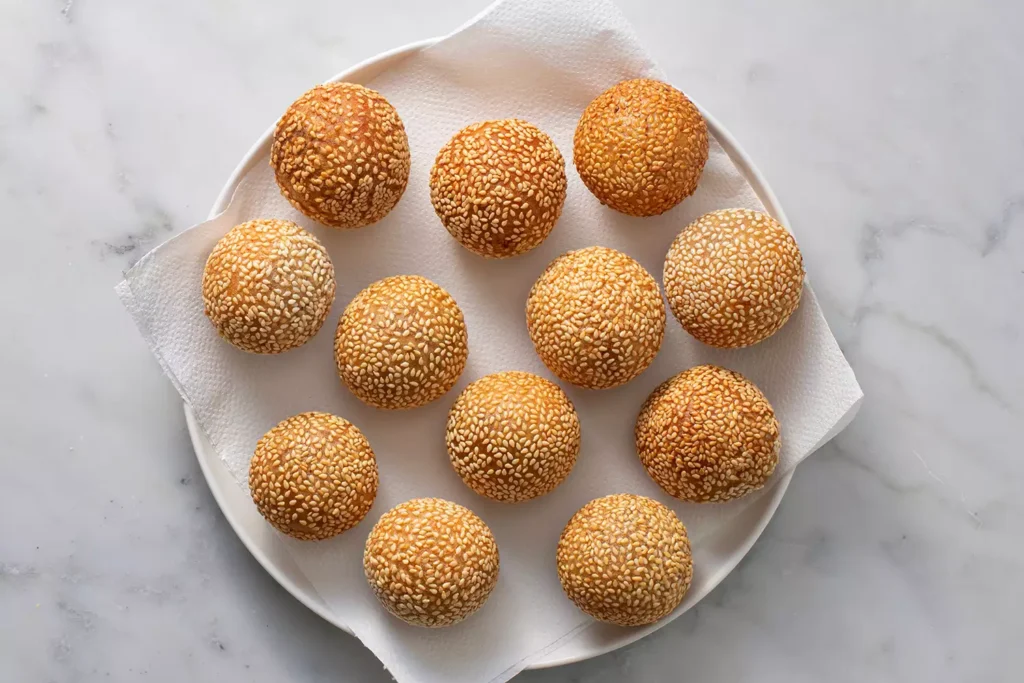
11) Sesame Balls
Sesame Balls, also known as Jian Dui, are a popular Chinese dessert made of glutinous rice flour. They are deep-fried and have a crispy outer layer covered with sesame seeds. Inside, there is often a sweet filling, such as red bean paste or lotus seed paste.
To make Sesame Balls, you start by mixing glutinous rice flour and sugar in a bowl. Gradually add hot water and stir until a smooth dough forms. Let the dough sit for a few minutes before shaping it into small balls.
To add the filling, flatten each dough ball with your hands, place a spoonful of filling in the center, and then pinch the dough around the filling to seal it. Roll each filled ball between your palms to make it smooth.
Next, coat the balls with sesame seeds. Dip a ball in water to moisten the surface, then roll it in sesame seeds until fully covered. This step ensures the sesame seeds stick to the dough during frying.
Heat oil to about 150°C (300°F) in a deep-sided pot. Fry the balls in batches, stirring occasionally, for about 5 minutes. Then, increase the heat to 180°C (350°F) and fry for another 2-3 minutes until golden brown. Drain on a wire rack or paper towel before serving.
Sesame Balls are best enjoyed warm. They have a delightful contrast between the crunchy outside and the soft, sweet filling inside.
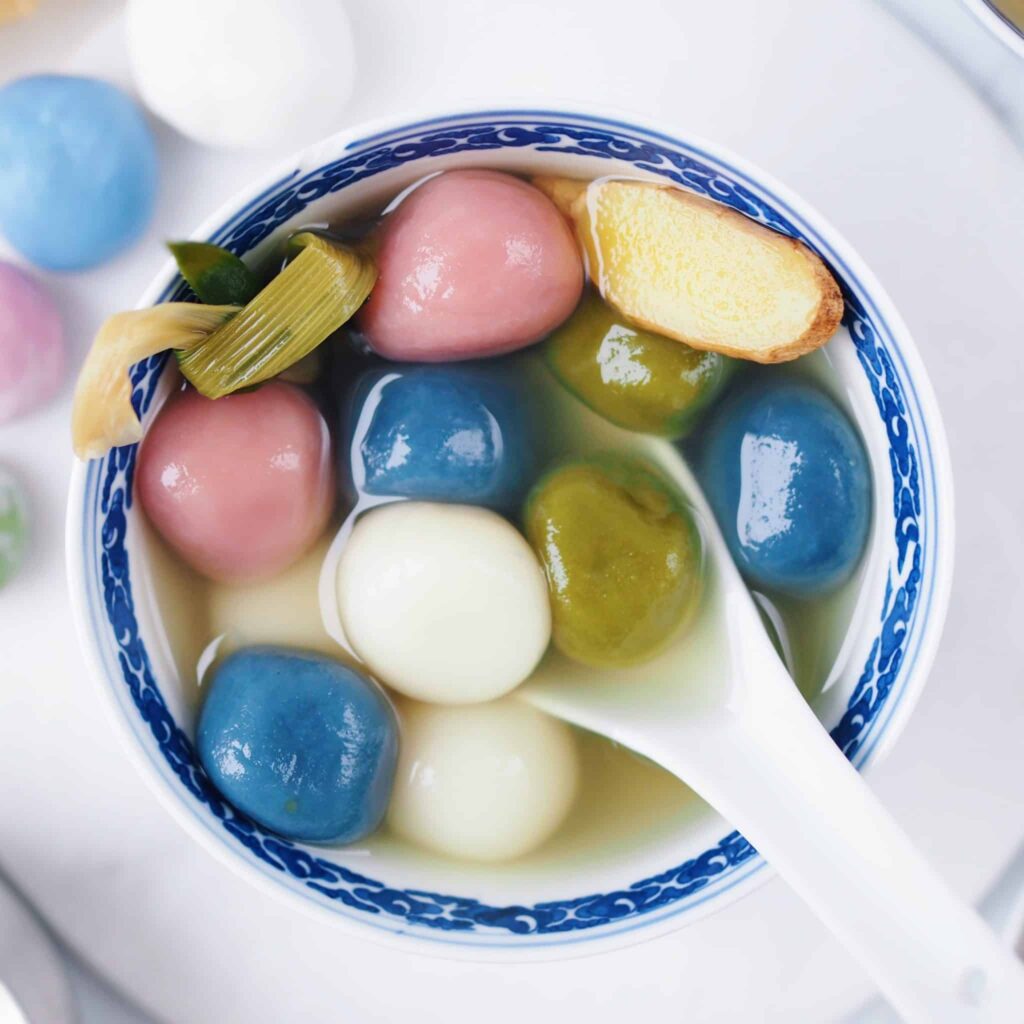
12) Glutinous Rice Balls
Glutinous rice balls, also known as Tang Yuan, are a popular Chinese dessert. They are made from glutinous rice flour, which gives them their unique chewy texture.
These rice balls come with various fillings. A common filling is black sesame paste. To make this, you grind roasted black sesame seeds, mix them with sugar, and bind them with butter or coconut oil.
Another common filling is red bean paste. This is made from cooked red beans, mashed and sweetened.
Tang Yuan is usually served in a warm, sweet broth. The broth can be plain or flavored with ginger or osmanthus flowers.
You cook these rice balls by boiling them. Once they float to the top, they are ready to eat.
Tang Yuan is often eaten during festivals, like the Lantern Festival. They symbolize unity and togetherness.
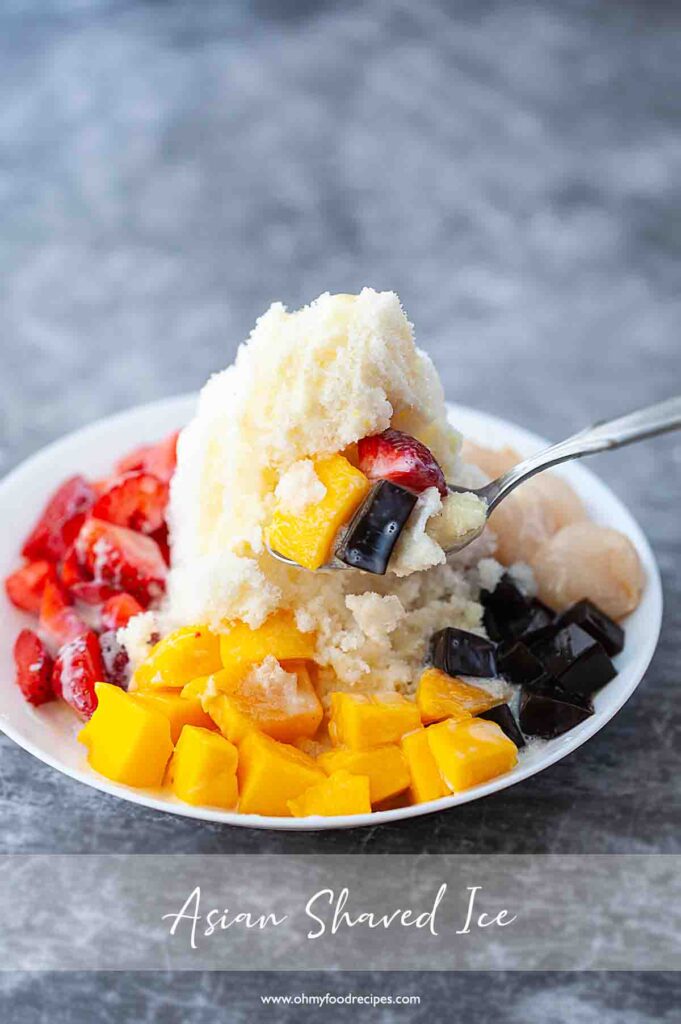
13) Shaved Ice
Shaved ice, known as Bao Bing (刨冰) in Chinese, is a popular dessert in China. It’s especially loved during hot summer months. This dessert features finely shaved ice that is fluffy and light, serving as the base for a variety of toppings.
Common toppings include red adzuki beans, mung beans, grass jelly, taro, and fresh fruits like mango and strawberries. You can also find condensed milk or syrup drizzled over the ice, enhancing the sweetness.
To prepare shaved ice, you need a machine to shave ice into thin, snow-like flakes. If you don’t have a machine, a blender can work in a pinch. Once the ice is ready, pile it high in a bowl.
Next, add your favorite toppings. For bean toppings, soak and cook them separately until tender. Sweeten them with sugar before adding them to the ice. Fresh fruit should be cut into small pieces for easy eating.
Condensed milk is a popular addition, poured over the top to give a creamy texture. You can get creative with toppings, combining different textures and flavors to suit your taste.
Shaved ice is both refreshing and versatile, making it a beloved treat across many regions of China.
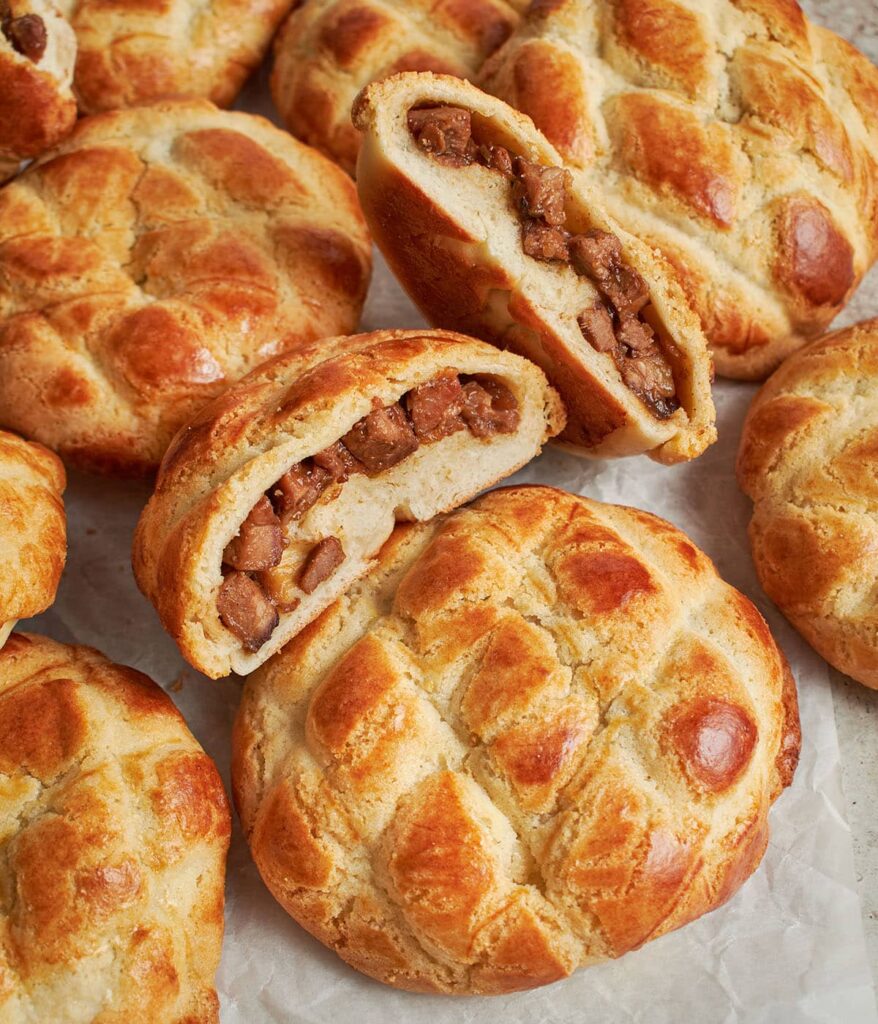
14) Pineapple Bun
The Pineapple Bun, or Bolo Bao, is a popular treat from Hong Kong. Despite its name, it doesn’t contain pineapple. The name comes from its crusty, golden-brown top, which looks like a pineapple.
To make the dough, you mix bread flour, sugar, salt, yeast, milk powder, egg, and milk. Some recipes call for heavy cream and cake flour for a richer texture. Knead until the mixture is smooth.
For the crunchy top, you prepare a separate dough. This topping includes butter, powdered sugar, egg yolk, milk powder, and flour. Shape it into discs and place them over the risen dough balls.
Brush the top with egg wash to achieve that shiny golden finish. You can add a crosshatch pattern for the pineapple look. Bake the buns at around 375°F until they’re golden brown.
Enjoy these fluffy, sweet buns fresh from the oven. They are often paired with tea or coffee and are a favorite at Chinese bakeries worldwide.
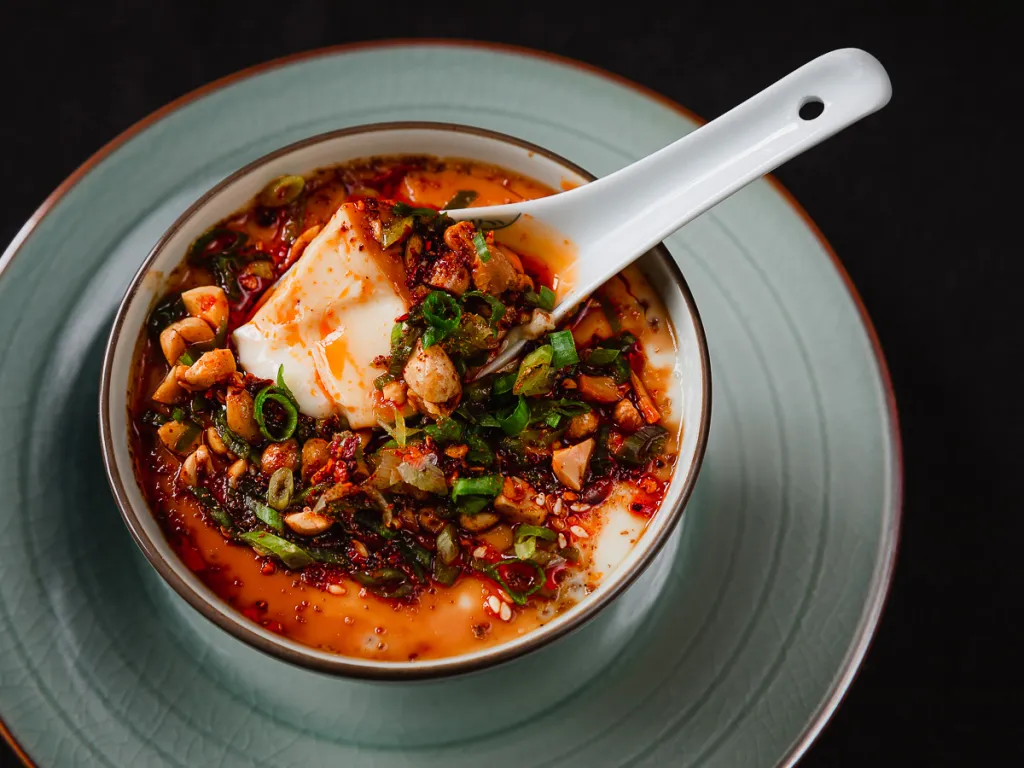
15) Douhua
Douhua, also known as tofu pudding, is a popular Chinese dessert made from very soft tofu. It is silky and smooth, often served with a sweet syrup infused with ginger or pandan. The traditional way to enjoy Douhua is warm, but you can also serve it chilled.
To make Douhua, start by soaking soybeans, then blend them with water until smooth. Filter the mixture using a cloth to separate the soybean residue from the soy milk. After that, cook the soy milk and use a coagulant like agar-agar powder to help the tofu set.
You can steam the soy milk mixture for about 10 minutes. Then, let it cool slightly before removing it from the stove. This process results in the characteristic smooth texture of Douhua that melts in your mouth.
The sweet syrup can be made from brown sugar or clear sugar, depending on your preference. Some people like to add unique twists, such as seafood or other toppings, for an interesting flavor variation.
Douhua is a versatile dessert, enjoyed by many both as a snack and a sweet treat at the end of meals. The simplicity in preparation and its delightful taste make it a favorite in Chinese cuisine.
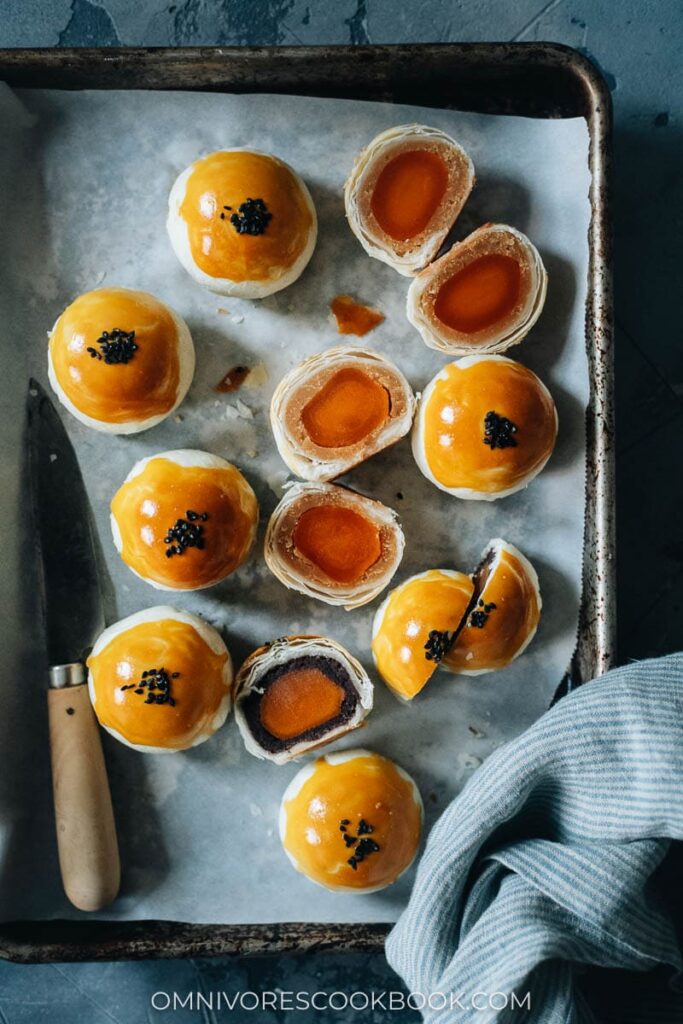
16) Yolk Puff
Yolk puff is a traditional Chinese dessert enjoyed for its soft, flaky texture and rich flavor. These puffs are made with wheat flour, butter or lard, and egg yolk. You can often find them topped with sesame seeds for an extra layer of taste.
The dough is carefully prepared to be flaky and delicate. A key part of making yolk puffs is brushing them with egg wash, not once but twice. This gives them a golden shine and helps the sesame seeds stick.
Yolk puffs often get confused with mooncakes, but they have their own unique identity. While mooncakes are dense and filled, yolk puffs are lighter and have a crispy outer layer.
Making yolk puffs at home isn’t too difficult if you follow the steps carefully. The repeated egg wash and resting periods ensure they turn out just right.
These puffs have become more popular over the years as ingredients have improved. Many enjoy them with tea or as an afternoon snack. They offer a delightful combination of textures and flavors, making them a favorite treat.
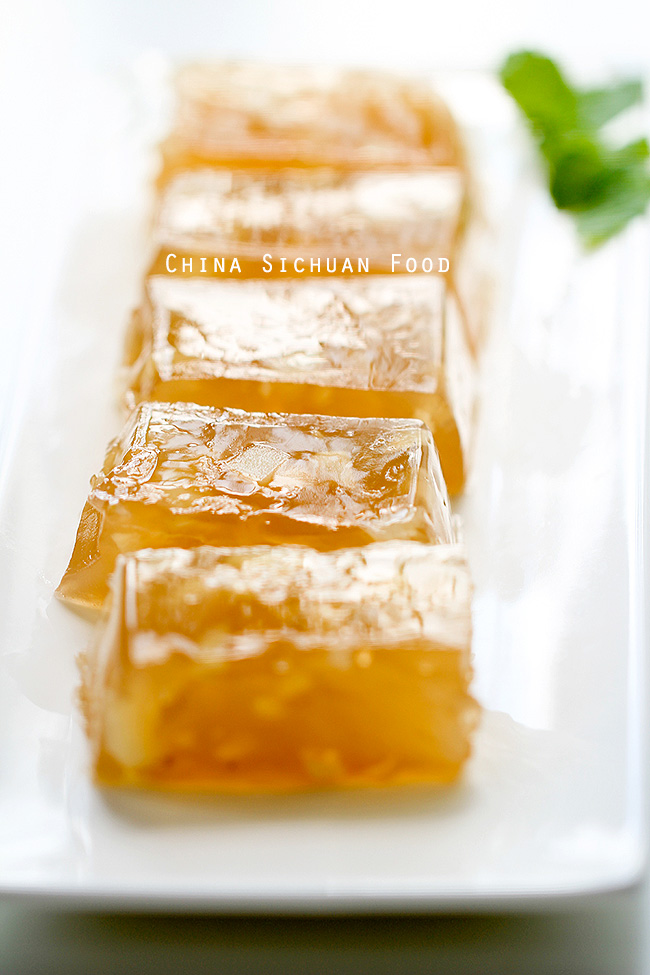
17) Water Chestnut Cake
Water Chestnut Cake, or Ma Tai Gou, is a popular Chinese dessert. It has a sweet taste and a jelly-like texture, making it unique and enjoyable. It’s often served at dim sum restaurants.
To make Water Chestnut Cake, you need water chestnut flour, water, and sugar. First, whisk the water chestnut flour with water until it dissolves completely. This mixture should be smooth.
In a separate pot, dissolve sugar in boiling water to create a sweet syrup. Once the sugar dissolves, add chopped water chestnuts to the syrup. This step gives the cake a crunchy texture.
Mix the flour mixture with the sugar syrup. Make sure to stir well. Pour this combined mixture into a greased pan for steaming. Steam until the cake sets.
You can enjoy Water Chestnut Cake at room temperature or pan-fried until crispy on the outside. It’s a versatile dessert that can be enjoyed in different ways.

18) Cantonese Sponge Cake
Cantonese Sponge Cake, also known as Ma Lai Go, is a popular dessert in Cantonese cuisine. It is light, airy, and steamed to create a delicate texture that melts in your mouth.
You will need a few key ingredients like cake flour, baking powder, and custard powder. Vanilla extract and evaporated milk add a subtle sweetness and creaminess to the cake.
To start, beat the eggs and sugar with an electric mixer until they are fluffy. Then, add the vanilla extract, evaporated milk, and custard powder. Mix until combined.
Next, sift the cake flour, baking powder, and a pinch of salt together. Gradually fold the dry ingredients into the wet mixture. Be careful not to overmix.
Pour the batter into a lined cake pan. Steam the cake over medium heat for about 30 minutes. This method keeps the cake moist and spongy.
This cake is often enjoyed with tea. It makes a great addition to any meal or can be a tasty snack by itself.
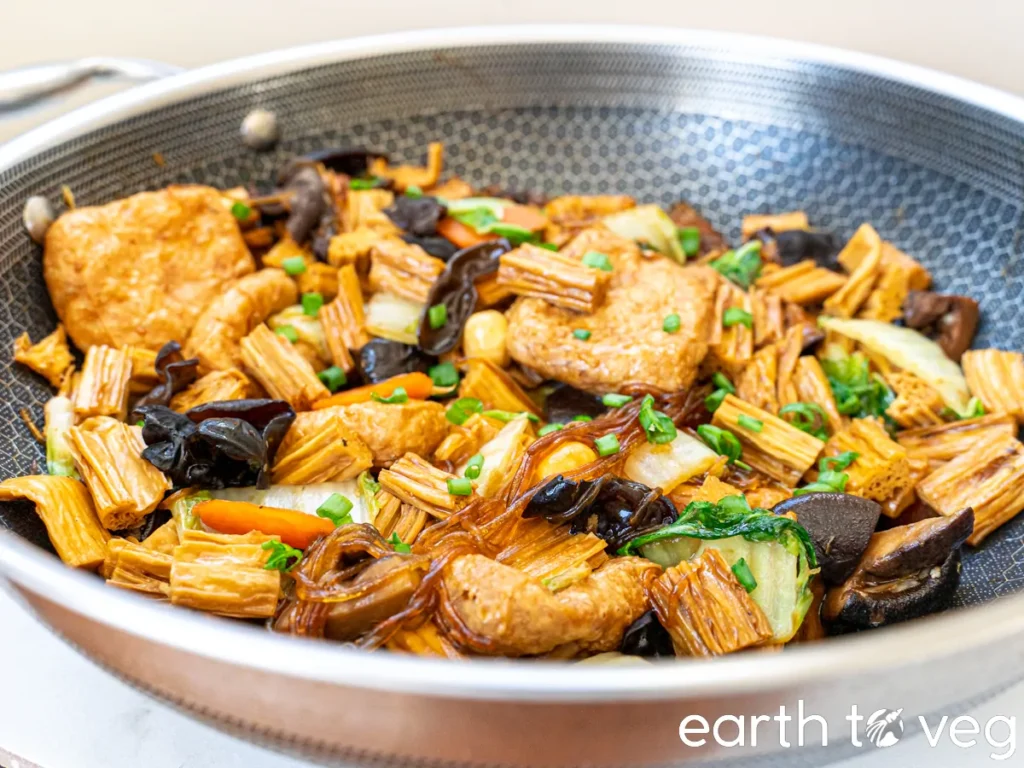
19) Buddha’s Delight Jelly
Buddha’s Delight Jelly is a unique dessert inspired by the traditional Buddha’s Delight dish. Unlike the savory version, this jelly is a sweet treat.
The jelly typically includes ingredients like agar-agar or gelatin, which give it a firm yet wobbly texture. You can add various fruits and nuts to enhance flavor and texture.
To start, you need to soak agar-agar strips in water until they soften. Then, dissolve the agar-agar in boiling water. Add sugar to taste and stir well.
Once the mixture is smooth, add your choice of chopped fruits like pineapple, mango, or lychee. Nuts such as almonds or cashews can also be included for a crunch.
Pour the mixture into molds and let it cool at room temperature before transferring it to the refrigerator. Allow it to set for a few hours until firm.
Buddha’s Delight Jelly can be served cold. It is a refreshing dessert, especially in warmer weather. Its light, fruity flavors and unique texture make it a delightful end to any meal. Enjoy experimenting with different fruits and nuts to create your perfect version.
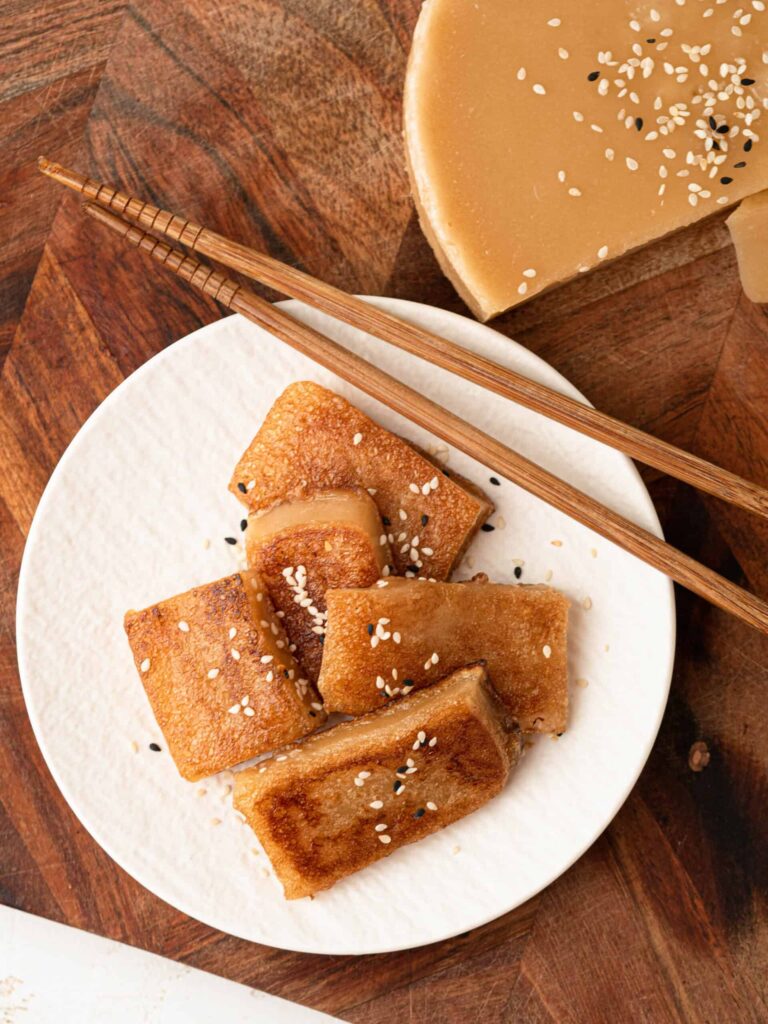
20) Sweet Rice Cake
Sweet Rice Cake, also known as Nian Gao, is a traditional Chinese dessert. It’s especially popular during Chinese New Year celebrations.
You make Sweet Rice Cake using glutinous rice flour, which gives it a sticky and chewy texture. The cake is often sweetened with sugar and can include ingredients like brown sugar or milk.
Cooking methods vary. Some recipes require steaming, while others may suggest baking. Both methods result in a delicious and sweet treat.
To prepare, start by mixing the rice flour with water and sugar. Then, either steam or bake the mixture until it becomes firm. You can also cut the finished cake into slices and fry them for added texture.
Enjoy Sweet Rice Cake warm or at room temperature. It symbolizes good luck and prosperity for the coming year.
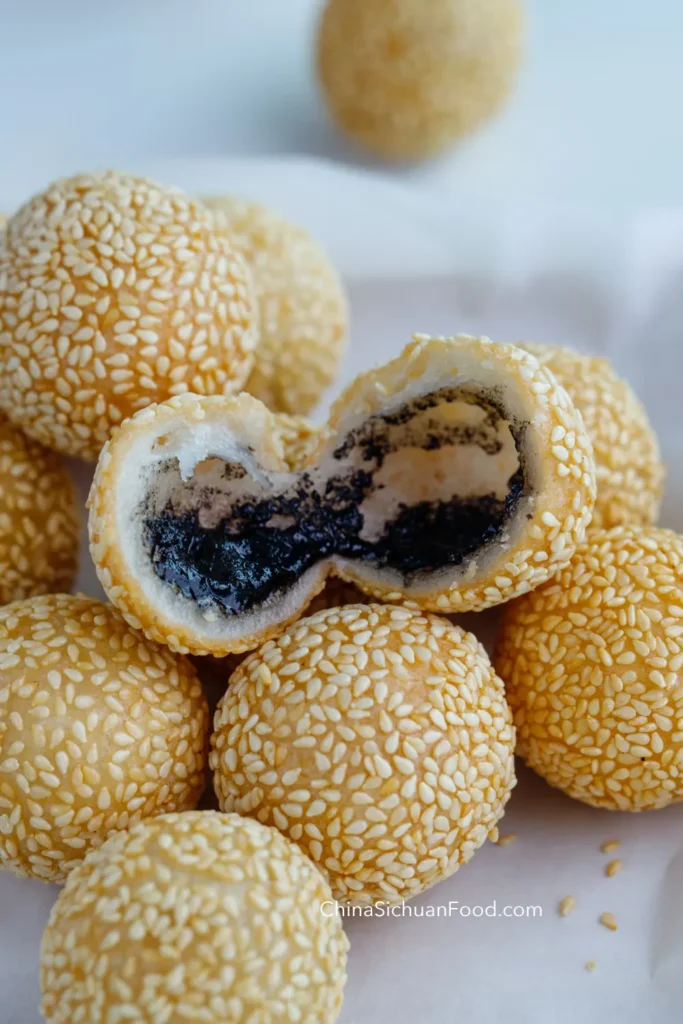
21) Jian Dui
Jian Dui, also known as sesame balls, is a popular Chinese dessert with a crispy exterior and a chewy interior.
You start by making a dough from glutinous rice flour. Divide the dough into small pieces and roll them into balls. Flatten each ball and place a teaspoon of red bean paste in the center.
Next, seal the filling by folding in the edges of the dough and rolling it back into a ball. Dip the dough ball in water and then roll it in sesame seeds. The water helps the sesame seeds stick to the surface.
Once coated, heat oil in a deep pan. The oil should be enough to completely submerge the balls. Carefully place the sesame balls into the hot oil. Fry them slowly until they turn golden brown.
Remove the balls from the oil and drain them on paper towels to remove excess oil. These delightful treats are best enjoyed fresh and warm.
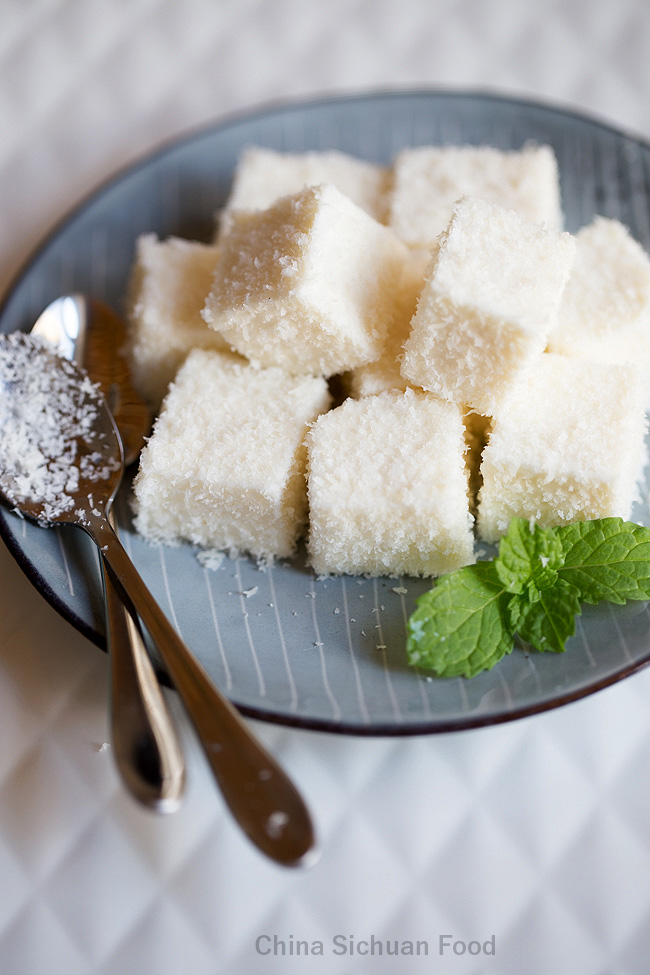
22) Coconut Bar
Coconut bars are a popular Chinese dessert that you can easily make at home. They are known for their rich coconut flavor and smooth texture.
To prepare coconut bars, you’ll need coconut milk, gelatin, sugar, and sometimes additional flavors like vanilla. Start by heating the coconut milk and sugar over medium heat until the sugar dissolves.
Next, sprinkle gelatin into the mixture and stir until it’s fully combined. Once the mixture is uniform, pour it into a square or rectangular pan. Let it cool before placing it in the refrigerator to set.
After a few hours, the mixture will firm up. Cut it into small squares or bars. They can be served chilled and make a refreshing treat, especially in warm weather.
Coconut bars not only taste delicious but are also relatively easy to make. Their light and creamy consistency makes them a favorite among many dessert lovers.
Traditional Ingredients In Chinese Desserts
Traditional Chinese desserts use a variety of ingredients that contribute to their unique flavors and textures. Some of the key components include common sweeteners, various flours and starches, and a diverse range of fruits and nuts.
Common Sweeteners
In Chinese desserts, you often find sweeteners like rock sugar, honey, and maltose syrup. Rock sugar is notable for its big, crystalline chunks and mild sweetness. It’s often used in soups and steamed desserts.
Honey provides a natural sweetness and golden color. It’s commonly mixed into doughs and batters, giving a rich flavor without overpowering other ingredients.
Maltose syrup is less sweet than regular sugar and has a thick, sticky texture. This syrup helps bind ingredients together, especially in candies and pastries.
Flours And Starches
Wheat flour, rice flour, and glutinous rice flour are staples in Chinese dessert making. Wheat flour is used in pastries like mooncakes and steamed buns. It provides structure and a neutral base for other flavors.
Rice flour is finer and creates a delicate, light texture. It’s essential in making items like almond cookies and some cakes. Glutinous rice flour, which is sticky and chewy when cooked, is central to treats like mochi and tangyuan (sweet rice balls).
Other starches like cornstarch and tapioca starch are used to thicken puddings and create smooth, shiny surfaces on certain sweets.
Fruits And Nuts
Fruits like red dates, lychee, and mango are commonly used in Chinese desserts. Red dates (jujube) are often boiled and sweetened, then used as filling for cakes and pastries.
Lychee gives a fragrant, sweet taste to jellies and drinks, while mango adds a tropical flavor to puddings and ice-creams. Nuts such as almonds, peanuts, and lotus seeds provide a crunchy texture and rich taste.
Almonds are common in almond jelly and cookies. Peanuts appear in brittle candies and as fillings in various pastries. Lotus seeds, both whole and as a paste, are fundamental in traditional desserts like mooncakes.
Unique Techniques Used In Chinese Dessert Preparation
Chinese desserts often use techniques that bring out unique flavors and textures. These include methods like steaming, frying, and fermentation.
Steaming
Steaming is a popular technique for preparing Chinese desserts. It helps in preserving the nutrients and flavors of the ingredients.
Steamed buns and glutinous rice cakes are common examples. You mix the dough or batter and place it in a steamer, which cooks it gently.
This method creates soft and moist textures. It’s also suitable for making delicate desserts like dim sum pastries and custards. To get the best results, ensure the water is boiling before placing the dessert inside.
Frying
Frying adds a crispy texture to Chinese desserts. It’s a technique used for treats like banana fritters and sesame balls.
Prepare the batter or dough and then heat the oil to the right temperature. Frying at a high temperature ensures a crispy outer layer while keeping the inside soft and tender.
Oil control is crucial here. Use paper towels to remove excess oil after frying. This method is also used in making fried dough sticks that are often enjoyed at breakfast.
Fermentation
Fermentation is used to develop complex flavors in some Chinese desserts.
Rice-based desserts like fermented rice balls utilize this technique. Soak the rice, mix it with yeast, and let it ferment for a few days. This adds a tangy and slightly alcoholic flavor.
Fermented bean curd is another example. It’s made by allowing tofu to ferment, giving it a rich and robust taste used in both sweet and savory dishes.
Patience is key, as fermentation can take several days. Properly maintain the fermentation environment to avoid any spoilage.
Regional Variations Of Chinese Desserts
Chinese desserts reflect the diverse culinary traditions across regions. Each area offers unique flavors and ingredients, giving a distinctive touch to their sweet treats.
Cantonese Desserts
Cantonese desserts are known for their light and subtle flavors. Dim sum often features desserts such as egg tarts and mango pudding. Almond jelly is another popular option, made with gelatin and ground almonds.
You can also find steamed milk pudding, a smooth and creamy dessert. Ingredients like coconut milk and red beans frequently appear in Cantonese sweets, adding a rich and satisfying taste. Sesame balls filled with red bean paste are a common street food.
Sichuan Desserts
Sichuan desserts often balance sweetness with a hint of spice. Bingfen, a jelly made from the seeds of a plant called jelly fig, is popular in this region. It’s usually served with sweet toppings like hawthorn syrup and brown sugar.
Sticky rice cake with red bean paste combines chewy and soft textures. Another well-known treat is glutinous rice balls in syrup, often flavored with ginger. The use of spicy chili powder or sauce in some desserts can surprise those unfamiliar with Sichuan cuisine.
Beijing Desserts
Beijing desserts often feature historical influences and simple, yet satisfying flavors. Wandouhuang, a pea cake made from yellow peas and sugar, is a traditional treat. Another classic is Tanghulu, skewered and candied hawthorn fruits, commonly enjoyed during winter.
Rolling donkey is a glutinous rice roll filled with red bean paste and coated with soybean flour. You’ll also find Jujube cake, which uses the local red dates. These desserts emphasize the natural sweetness of fruits and legumes, reflecting Beijing’s agricultural roots.








